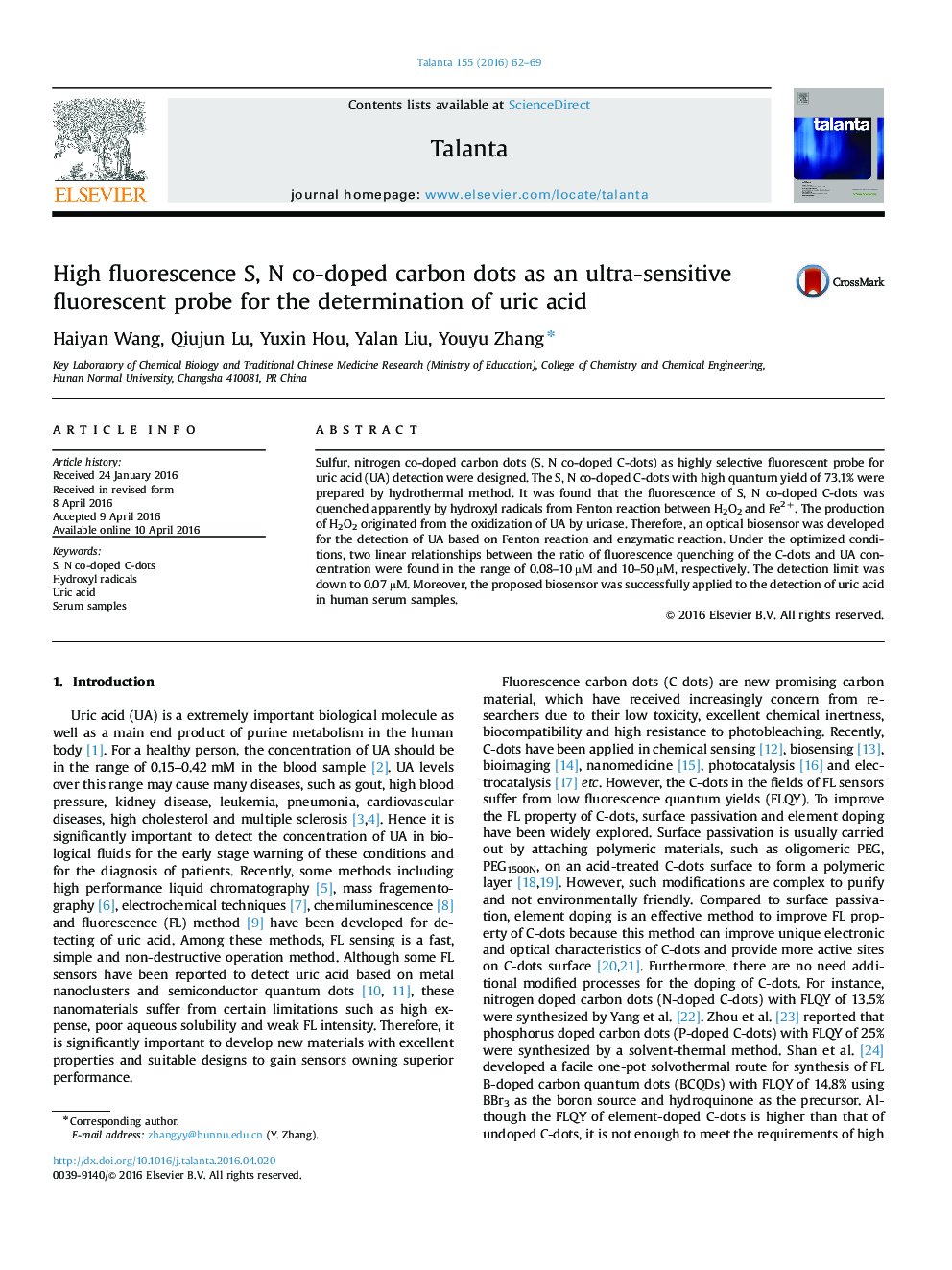| Article ID | Journal | Published Year | Pages | File Type |
|---|---|---|---|---|
| 1242414 | Talanta | 2016 | 8 Pages |
•The S, N co-doped C-dots with high FLQY of 73.1% were prepared by hydrothermal method.•Nanosensor for detection of uric acid based on S, N co-doped C-dots was developed.•The proposed nanosensor had low detection limit, high sensitivity and selectivity.•The nanosensor was used to detect uric acid in human serum samples.
Sulfur, nitrogen co-doped carbon dots (S, N co-doped C-dots) as highly selective fluorescent probe for uric acid (UA) detection were designed. The S, N co-doped C-dots with high quantum yield of 73.1% were prepared by hydrothermal method. It was found that the fluorescence of S, N co-doped C-dots was quenched apparently by hydroxyl radicals from Fenton reaction between H2O2 and Fe2+. The production of H2O2 originated from the oxidization of UA by uricase. Therefore, an optical biosensor was developed for the detection of UA based on Fenton reaction and enzymatic reaction. Under the optimized conditions, two linear relationships between the ratio of fluorescence quenching of the C-dots and UA concentration were found in the range of 0.08–10 µM and 10–50 µM, respectively. The detection limit was down to 0.07 µM. Moreover, the proposed biosensor was successfully applied to the detection of uric acid in human serum samples.
Graphical abstractFigure optionsDownload full-size imageDownload as PowerPoint slide
